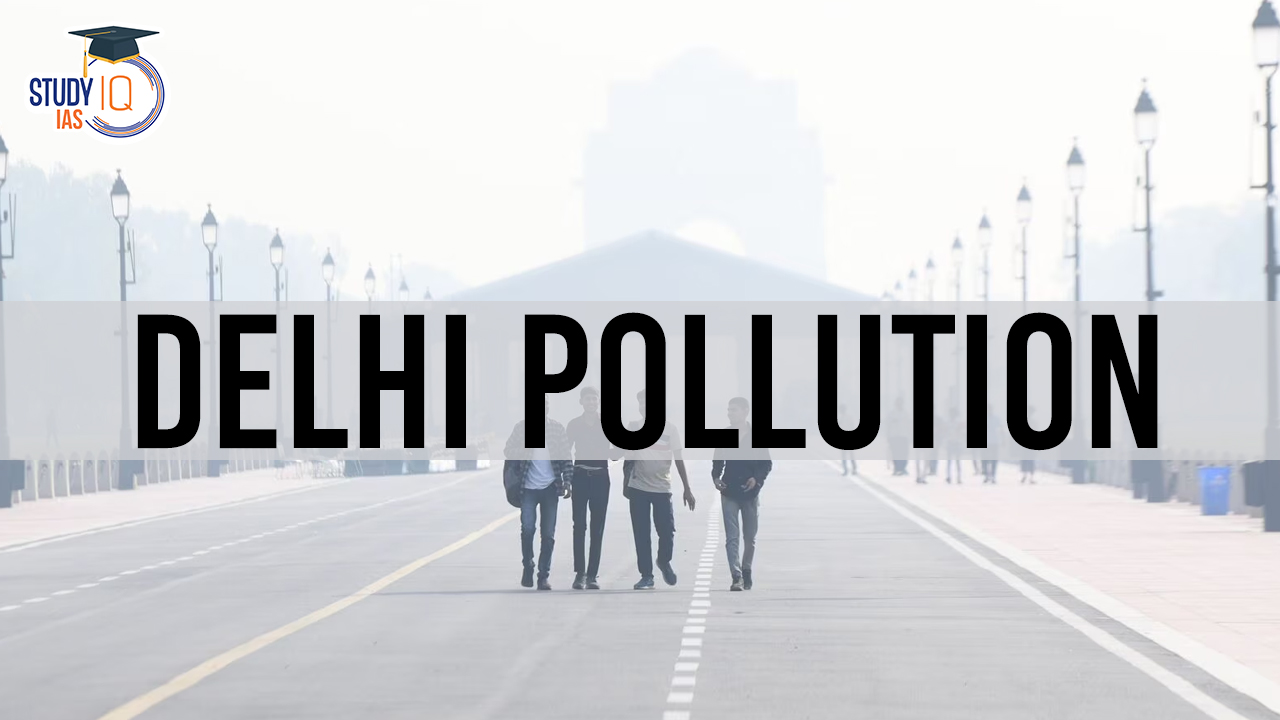Table of Contents
The air quality in Delhi has plunged to alarming levels, with the Air Quality Index (AQI) recorded between 1300 and 1600 in several areas, placing it in the hazardous category. According to data from Swiss air technology company IQAir, Mundka logged the worst AQI at 1591, followed by Dwarka-Sector 8 (1497) and Rohini (1427). These shocking numbers underline the urgent need for effective measures to combat Delhi’s recurring pollution crisis.
Delhi Pollution
Delhi’s air pollution crisis has reached alarming levels, with AQI readings surpassing 999 in Anand Vihar and exceeding 450 in Noida. The city is shrouded in a persistent smoky haze, posing severe health risks, especially for vulnerable groups like children and the elderly. The situation is exacerbated by farm fires, adverse weather conditions, and vehicular emissions. Strict measures and collaborative efforts are imperative to address this dire issue and protect the well-being of Delhi’s residents.
Pollution in Delhi
Delhi, the capital of India, faces chronic air pollution issues. Factors contributing to the problem include vehicular emissions, industrial pollution, construction dust, and agricultural practices like crop residue burning. The city often experiences “severe” air quality, with high levels of particulate matter and pollutants. Government initiatives, such as the “Odd-Even” scheme, aim to combat vehicular pollution. The situation worsens during winter months, leading to health concerns and necessitating strict regulations and efforts to control pollution sources.
Delhi Air Pollution
What is AQI and its Significance?
The Air Quality Index (AQI) is a standard measurement system used globally to indicate the quality of air. It categorizes air quality into six levels ranging from “Good” (0-50) to “Hazardous” (301-500 and beyond). An AQI exceeding 500 signifies extremely dangerous pollution levels, while readings above 1000 are considered a public health emergency.
Most Polluted Areas in Delhi
As per IQAir data, the worst-affected areas in Delhi on Monday were:
- Mundka: AQI 1591
- Dwarka-Sector 8: AQI 1497
- Rohini: AQI 1427
- Najafgarh: AQI 1396
- Pooth Khurd: AQI 1354
- Vivek Vihar: AQI 1338
- Narela: AQI 1332
Air Pollution in Delhi
Air pollution in Delhi is a chronic and significant problem. The city consistently faces poor air quality, primarily due to various factors. Vehicular emissions, industrial activities, construction dust, and crop residue burning are major contributors to the elevated levels of air pollutants in the region.
During the winter months, Delhi’s air quality tends to deteriorate further due to adverse weather conditions, which trap pollutants close to the surface. This results in smog and increased health risks for residents.
Reasons for Delhi Air Pollution
The escalation of pollution levels in Delhi during the winter months can be attributed to a combination of factors:
- Stubble Burning: Farmers in neighbouring states like Punjab and Haryana burn crop residues to prepare their fields for the next season. This practice releases substantial smoke and particulate matter, which are carried by the wind to Delhi. In 2021, stubble burning contributed to 25% of Delhi’s pollution, emitting harmful gases like Carbon Monoxide (CO), methane (CH4), and volatile organic compounds (VOC).
- Wind Direction: The prevailing wind direction in Delhi during the winter months is northwesterly. These winds transport dust and smoke from neighbouring regions when stubble burning occurs in Haryana and Punjab. A change in wind direction can influence the extent to which these pollutants enter the city.
- Temperature Inversion: Temperature inversion is a weather phenomenon where the air temperature increases with altitude, trapping pollutants close to the ground. During Delhi’s cold and calm winter weather, temperature inversion leads to the accumulation of pollutants in the lower atmosphere, forming a thick layer of smog.
- Dry and Still Air: Winters in Delhi are characterized by reduced rainfall and low wind speed, preventing the dispersion and dilution of pollutants. Consequently, these pollutants remain suspended in the air for longer durations.
- Vehicular and Industrial Emissions: Delhi’s high population and extensive vehicle count contribute significantly to air pollution, emitting harmful gases and particulate matter. Industrial activities in and around the city further exacerbate the problem by burning fossil fuels and releasing chemicals into the atmosphere.
- Dust Storms, Firecrackers, and Biomass Burning: Other sources of pollution that intensify during winters include dust storms, which carry dust particles from arid regions; the use of firecrackers during festivals, releasing smoke and metals; and domestic biomass burning for heating, adding carbon monoxide and particulate matter to the air. A 2015 study found that biomass burning alone accounts for 17-26% of all particulate matter in Delhi during winters.
Government Initiatives to Control Delhi’s Pollution
| Government Initiatives to Control Delhi’s Pollution | Description |
| Green War Room | A nine-member team monitoring actions taken by 20 government agencies in real-time and daily. |
| Anti-Pollution Campaign | Delhi Government’s Yuddh Pradushan Ke Viruddh campaign, including tree transplantation and other initiatives. |
| Green Delhi App | A mobile app for citizens to report pollution instances such as garbage burning, industrial emissions, and traffic congestion. |
| Bio-Decomposer | Solution by PUSA institute for farmers to decompose crop residue without burning, with the government providing free spraying of bio-decomposer. |
| Water Sprinklers | Use of water sprinklers, road sweeping machines, anti-smog guns, and sprinkling facilities to reduce dust and particulate matter. |
| Industry Pollution | Monitoring industrial sites, ensuring clean fuel usage, extending piped natural gas to industries, and establishing an e-waste eco-park. |
| PUC Certificates | Enforcement of pollution under control (PUC) certificates for vehicles, banning non-essential goods-carrying trucks, and adding 1,000 private CNG vehicles to public transport. |
| Smog Towers | Installation of smog towers with fans and filters to purify the air. The first tower is at Connaught Place and has shown positive effects. |
| Pollution Hotspots | Identification of 21 pollution hotspots in Delhi, deploying special teams to monitor and mitigate pollution sources in these areas. |
Delhi Pollution UPSC
Delhi’s air quality crisis is a wake-up call for immediate action. While GRAP and advisories aim to mitigate the current emergency, addressing the root causes requires a collaborative, multi-pronged approach involving citizens, government authorities, and neighboring states. Without sustained efforts, the hazardous air quality in the nation’s capital could lead to long-term health and economic consequences.


 Places in News for UPSC 2025 for Prelims...
Places in News for UPSC 2025 for Prelims...
 List of Indian State Animals with their ...
List of Indian State Animals with their ...
 World Heritage Day 2025, Theme, Objectiv...
World Heritage Day 2025, Theme, Objectiv...





















